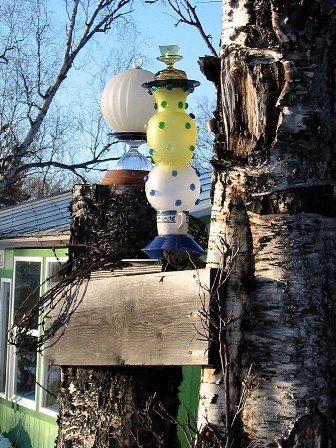DD One
Dirt Divas column from May 10, 2005
To have great plants, you need great soil. This is not a mystery. We live in one of the best agricultural areas in the world, renowned for its soil (really), but many a manic gardener lives in the surrounding gravel and swamp. So, we buy soil, usually a ‘three-way’-mix’ – 1/3 top soil, 1/3 humus, 1/3 sand. These mixes vary greatly, depending on where the parent ingredients come from. They range from OK to not so good, but all fall short of being the Holy Grail of garden soil. A little care to the under layer of your garden now, will reap amazing results later.
Soil needs several basic things, nutrition, airspace, drainage, and humus. To address these needs the ‘squeeze test’ works well. That’s what’s going on when you drive by a farm and see folks hunkered down in a field, hands in the soil, apparently talking to the ground. It’s easy to imagine that the uncertainties of farming have finally gotten to them, but really they are just examining their dirt (at least that’s what’s usually going on).
Grab an undisturbed handful of soil from your garden. Squeeze it. If it clings together when you open your hand, it may have too much clay. If it runs out between your fingers, it may be too sandy. If it feels heavy it may be lacking humus. Getting the picture? To get the Holy Grail you need a magical balance of grit, dirt and humus. It should feel fairly light, smell fresh (not stale, nasty or putrid), and rest loosely in your hand. Small to tiny rocks are OK.
So what do you do if your dirt feels all wrong, or worse yet, smells like used socks or your kid’s dirty underwear? Bad smells usually mean two things – you are gardening in a chemical waste dump or your soil doesn’t have enough aeration. The first scenario is highly unlikely but the second is common. No air space means no channels for water movement, which, in turn, causes organic matter within the soil to go stagnant, thus the smell!
Try this guide to great plants – err, soil.
1. Remember, grit allows air and water movement. So, not enough grit? – add sand or pea-gravel. Up to 25% grit usually does well in a solid, clay-like soil. Just break up the soil as best you can, spread the grit, and mix. A rototiller works wonders for large areas. For those of us who prefer the back-breaking method, a spade is great. Don’t go overboard! A garden with too much grit will be hard to keep watered!
2. Humus is organic matter. Humus adds nutrition, fluff and critters to your soil. Yes, critters! There are many faithful ground-dwellers hard at work for you (for free!) if encouraged. Earth worms, ants, beetles, centipedes and microscopic organisms constantly travel under your garden, opening up airways while leaving their own nutritious fertilizers behind. Humus is a wonderful thing, but heed these warnings. Peat moss can have a drying effect on the soil. Peat is dried, decayed, ancient moss and it is very thirsty! While quenching its thirst it pulls moisture from the surrounding soil. Aged manure is wonderful, but can bring in a lot of weeds. Use packaged steer manure sparingly – it is high in nitrogen. Extra-fine bark mulch is great, but adds up in price. So the winner is…..the humble leaf! Leaves are free and abundant. Beware of diseased leaves, however. They can court disaster to the garden!
3. Once grit and humus are balanced with the top-soil in your garden, drainage follows. Some plants like Dwarf Jacobs Ladder need extra drainage and fairly dry conditions to survive. Create a bed with at least 50% grit and plant varieties that all enjoy such conditions, or make a little area for your single, gritty-loving plant.
Soil Recipe for Perennial/Shrub Boarder
For every three portions of pea-gravel, mix in two portions each of top soil (plain old dirt), humus, and sand.
This may seem high in grit, but it works wonders for root permeability, aeration, nutrition, water retention and stability. Warning! Shrubs will grow huge and perennials will spread. Ah! Such a shame!
Sunday, April 23, 2006
Subscribe to:
Post Comments (Atom)



No comments:
Post a Comment